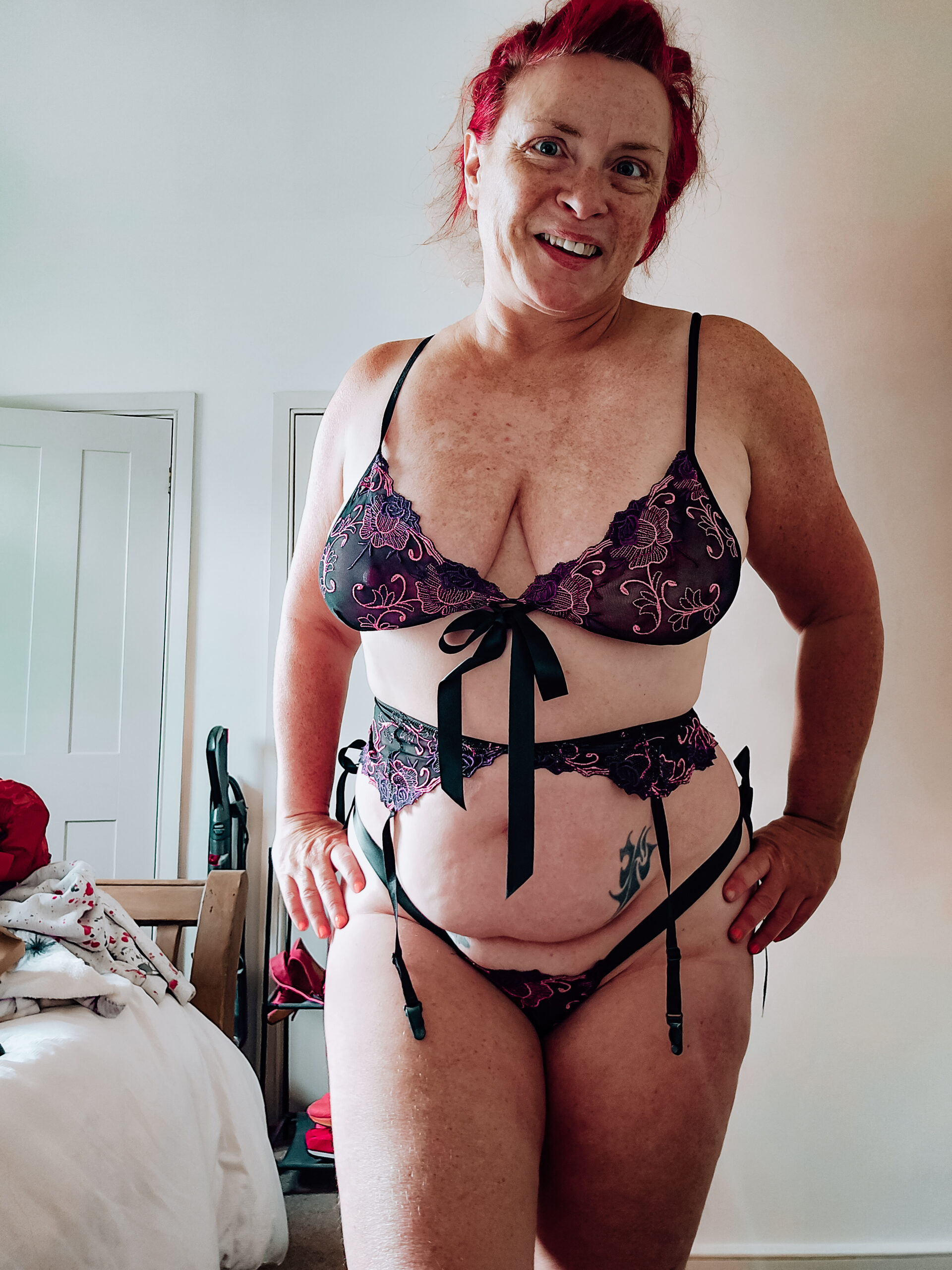Graysexuality And Its Effect On Romantic And Sexual Relationships

how to use a spreader bar bdsm
Check out more from this post

how to use a spreader bar bdsm
Check out more from this post

Breadcrumbing, a modern dating trend characterized by sporadic and insincere gestures of affection, has become increasingly prevalent in our digital age. This seemingly harmless behavior, where individuals offer just enough attention to keep another person interested but never fully commit, can have profound psychological consequences.


At its core, breadcrumbing stems from a deep-seated fear of commitment. Those who engage in this behavior often struggle with the idea of emotional intimacy and vulnerability. They may be afraid of being hurt or rejected, leading them to create a safe distance by offering only fleeting glimpses of affection. This avoids the potential discomfort and risk associated with forming a real, lasting bond.
For the recipient of these breadcrumbs, the experience can be emotionally draining. The inconsistent attention creates a cycle of hope and disappointment, leaving individuals feeling confused and insecure. They may find themselves constantly seeking validation and reassurance, desperately trying to decipher the sender’s true intentions. This rollercoaster of emotions can ultimately erode their self-esteem and make it difficult to form healthy attachments in the future.
Breadcrumbing thrives on low emotional investment from both parties involved. The person breadcrumbing avoids deep emotional connections by maintaining a sense of detachment. They are invested enough to keep the other person engaged, but not enough to risk genuine vulnerability or commitment.
The recipient, however, often invests more emotionally. They may crave the attention and hope for something more substantial. This imbalance in emotional investment fuels the cycle of breadcrumbing, leaving the recipient feeling used and undervalued.
Breadcrumbing, a modern dating trend characterized by sporadic and insincere gestures of affection, has become increasingly prevalent in our digital age. This seemingly harmless behavior, where individuals offer just enough attention to keep another person interested but never fully commit, can have profound psychological consequences.
At its core, breadcrumbing stems from a deep-seated fear of commitment. Those who engage in this behavior often struggle with the idea of emotional intimacy and vulnerability. They may be afraid of being hurt or rejected, leading them to create a safe distance by offering only fleeting glimpses of affection. This avoids the potential discomfort and risk associated with forming a real, lasting bond.
For the recipient of these breadcrumbs, the experience can be emotionally draining. The inconsistent attention creates a cycle of hope and disappointment, leaving individuals feeling confused and insecure. They may find themselves constantly seeking validation and reassurance, desperately trying to decipher the sender’s true intentions. This rollercoaster of emotions can ultimately erode their self-esteem and make it difficult to form healthy attachments in the future.
Breadcrumbing thrives on low emotional investment from both parties involved. The person breadcrumbing avoids deep emotional connections by maintaining a sense of detachment. They are invested enough to keep the other person engaged, but not enough to risk genuine vulnerability or commitment.
The recipient, however, often invests more emotionally. They may crave the attention and hope for something more substantial. This imbalance in emotional investment fuels the cycle of breadcrumbing, leaving the recipient feeling used and undervalued.
In an age defined by instant gratification and fleeting connections, a new dating trend has emerged that poses a significant threat to genuine intimacy: breadcrumbing. Characterized by sporadic and insincere expressions of affection, this behavior preys on the human desire for connection while ultimately undermining its potential.
Breadcrumbing creates an emotional rollercoaster for those on the receiving end. The intermittent attention sparks hope, leading to feelings of excitement and anticipation. However, these moments are often followed by periods of silence or vague responses, leaving the recipient feeling confused, insecure, and rejected. This constant fluctuation between highs and lows takes a toll on their emotional well-being, making it difficult to form stable and trusting relationships.
The inconsistent nature of breadcrumbing can damage a person’s self-esteem. When someone constantly seeks validation and reassurance from another who offers only fleeting glimpses of affection, they may start to question their own worth and desirability. This can lead to a sense of inadequacy and make it harder for them to believe in their ability to find genuine love and connection.
Breadcrumbing’s impact on relationships is profoundly damaging. It fosters an environment of uncertainty and insecurity, making it difficult to build trust and emotional intimacy.
The inconsistent nature of breadcrumbing leads to a constant state of emotional flux for the recipient. The hope sparked by sporadic gestures of affection is quickly extinguished by periods of silence or indifference. This creates a cycle of longing and disappointment, eroding the foundation of trust that is essential for any healthy relationship.
Moreover, breadcrumbing can leave individuals feeling used and undervalued. The person doing the breadcrumbing avoids true emotional commitment, keeping their distance while offering just enough attention to keep the other person hooked. clitoral stim ring This creates a power imbalance, leaving the recipient feeling like they are not truly valued or cherished.
Breadcrumbing can severely impact relationships by fostering insecurity and hindering the development of genuine intimacy. The inconsistent nature of this behavior creates an emotional rollercoaster for the recipient, leading to feelings of confusion, disappointment, and a lack of trust.
One major obstacle to healthy communication in situations involving breadcrumbing is the reluctance to have open and honest conversations about expectations and intentions. Those who engage in breadcrumbing often avoid direct communication, preferring to maintain a sense of detachment and ambiguity. This lack of transparency creates a breeding ground for misunderstandings and resentment.
Furthermore, breadcrumbing often thrives on misinterpretations and wishful thinking. The recipient may desperately try to decipher the sender’s true intentions, clinging to the hope that their affection will eventually blossom into something more substantial. However, this can lead to a distorted perception of the relationship, making it difficult to establish healthy boundaries and communicate needs effectively.
Social media has become a fertile ground for breadcrumbing, a dating trend characterized by sporadic and insincere gestures of affection. The platforms’ ability to foster fleeting connections and instant gratification makes them ideal breeding grounds for this behavior.
Social media has become a fertile ground for breadcrumbing, a dating trend characterized by sporadic and insincere gestures of affection. The platforms’ ability to foster fleeting connections and instant gratification makes them ideal breeding grounds for this behavior.
The ease with which individuals can maintain multiple online personas and interact with numerous potential partners creates an environment where breadcrumbing can flourish. People are less likely to feel accountable for their actions when they are communicating through a screen, making it easier to engage in superficial interactions without risking emotional vulnerability.
Furthermore, social media’s emphasis on curated profiles and idealized self-presentation can contribute to the illusion of connection. Individuals may present carefully crafted versions of themselves online, leading others to form false impressions based on carefully constructed images and captions. This creates a sense of disconnect between the perceived and the actual, making it difficult to discern genuine intentions behind seemingly affectionate gestures.
The constant stream of notifications and updates on social media can also fuel the breadcrumbing cycle. Individuals may feel pressured to respond quickly and maintain an active online presence, leading to sporadic exchanges that lack depth or substance. This creates a sense of urgency and expectation that further perpetuates the cycle of hope and disappointment.
Social media has dramatically changed how people connect and interact, creating both opportunities and challenges in dating. While it offers platforms for building relationships, its inherent design also contributes to the rise of breadcrumbing.
The ease of digital disengagement on social media platforms makes it easy for individuals to engage in superficial interactions without committing to deeper emotional connections. A simple like, comment, or fleeting message can create a false sense of connection, allowing individuals to avoid difficult conversations about intentions and commitment.
The constant stream of updates and notifications on social media platforms can further fuel the breadcrumbing cycle. Individuals may feel pressure to respond quickly and maintain an active online presence, leading to sporadic exchanges that lack depth or substance. This creates a sense of urgency and expectation that perpetuates the cycle of hope and disappointment.
Breadcrumbing, a modern dating trend characterized by sporadic and insincere gestures of affection, has become increasingly prevalent in our digital age. This seemingly harmless behavior, where individuals offer just enough attention to keep another person interested but never fully commit, can have profound psychological consequences.
Breadcrumbing, a modern dating trend marked by sporadic and insincere gestures of affection, is eroding genuine connection in our increasingly digital world. This seemingly harmless behavior, where individuals offer just enough attention to keep another person interested but never fully commit, can have profound psychological consequences.
Recognizing the red flags of breadcrumbing is crucial for protecting your emotional well-being. Watch out for inconsistent communication patterns, where affection is offered in bursts but rarely sustained. Pay attention to vague responses and a lack of concrete plans for the future.
If you find yourself constantly seeking validation and reassurance from someone who only offers fleeting glimpses of interest, it’s a clear sign that you might be experiencing breadcrumbing. Trust your instincts if something feels off. If you feel used or undervalued in the relationship, it’s time to step back and reevaluate.
Remember, healthy relationships are built on mutual respect, open communication, and genuine emotional investment. Don’t settle for crumbs when you deserve a fulfilling connection.

Breadcrumbing can leave individuals feeling confused, insecure, and emotionally drained. Setting boundaries is crucial for protecting yourself from the negative impacts of this dating trend.
Start by clearly communicating your expectations and needs to potential partners. Let them know that you value consistent communication, honesty, and genuine interest.
Don’t be afraid to ask direct questions about their intentions and availability. If someone is consistently vague or evasive, it’s a red flag.
If you find yourself repeatedly chasing after someone who offers only sporadic attention, it’s time to step back. Limit your contact with them and focus on connecting with people who treat you with respect and invest in the relationship.
Remember, you deserve a relationship where you feel valued, appreciated, and emotionally secure. Don’t settle for crumbs when you deserve a whole loaf.
Breadcrumbing can severely damage self-respect and emotional well-being. It creates a cycle of hope and disappointment, leaving individuals feeling insecure and questioning their worth.
When someone consistently offers only fleeting glimpses of affection and avoids genuine commitment, it sends a message that you are not worthy of their full attention or investment. This can erode your self-esteem and make it difficult to believe in your ability to find love and happiness.
Prioritizing self-respect means recognizing your worth and demanding to be treated with the dignity and consideration you deserve.
If you find yourself constantly seeking validation from someone who offers breadcrumbs, it’s time to break free from this harmful pattern.
To prioritize your emotional well-being, focus on cultivating healthy boundaries. This means clearly communicating your needs and expectations to others, and not settling for anything less than downstroke sex position what you deserve.
Engage in activities that bring you joy and fulfillment. Surround yourself with supportive friends and family who uplift and encourage you.
Remember that you are worthy of love, respect, and genuine connection. Don’t settle for crumbs when you deserve a whole loaf.
Explore more of the story
Access everything right here

Gender expression, the way individuals outwardly present their gender identity through clothing, behavior, and other aspects of presentation, exists on a spectrum far broader than traditional binary notions. Understanding this complexity is crucial to comprehending the multifaceted nature of sexual identity. kinky roleplay costumes
While societal norms often confine gender expression to rigid male and female categories, individuals express their identities in diverse and fluid ways. Some may align with these traditional binaries, while others identify as non-binary, genderqueer, or transgender, rejecting the limitations of a strict binary system. This fluidity extends beyond clothing and outward appearance; it encompasses mannerisms, voice, interests, and interactions, creating a rich tapestry of individual expressions.
Recognizing this spectrum is essential for fostering inclusivity and understanding. Imposing binary constraints on gender expression can lead to misgendering, marginalization, and a sense of alienation for individuals who do not conform to societal expectations. Embracing the diversity of gender expression allows individuals to authentically express themselves and contributes to a more inclusive and accepting society.
The intersection of gender expression and sexual identity is complex and multifaceted. Gender expression, the outward manifestation of one’s internal gender identity, exists on a spectrum rather than adhering to rigid binary categories.
Individuals may express their gender through clothing, behavior, voice, and other aspects of presentation in ways that align with societal norms or challenge them entirely. This fluidity allows for a wide range of self-expressions, encompassing those who identify as male, female, non-binary, genderqueer, or transgender, among others.
Understanding this spectrum is crucial for recognizing the diversity of human experience and fostering an environment of acceptance and respect. By acknowledging the fluidity of gender expression, we create space for individuals to authentically express themselves and contribute to a more inclusive society.
Gender expression, the outward presentation of one’s internal gender identity, plays a significant role in shaping an individual’s sexual identity.
For some, their gender expression aligns with societal expectations associated with their sexual orientation. However, for many others, the relationship between gender expression and sexual identity is more complex and fluid. Exploring different forms of gender expression can be a powerful tool in the process of self-discovery and understanding one’s sexuality.
Individuals may find that experimenting with different ways of expressing their gender allows them to connect with aspects of themselves they hadn’t previously recognized. This exploration can lead to a deeper understanding of their own desires, attractions, and ultimately, their sexual identity.
It is important to remember that there is no single “right” way to express one’s gender or sexuality. The journey of self-discovery is unique to each individual, and embracing this diversity allows for a more authentic and fulfilling experience.
Gender expression, the outward manifestation of an individual’s internal gender identity, profoundly impacts sexual identity formation and expression. It provides a framework through which individuals explore and understand their desires, attractions, and ultimately, their sexual selves.
For some, gender expression aligns with societal expectations associated with their sexual orientation, creating a sense of validation and coherence in their identity. However, for many, the relationship between gender expression and sexual identity is more complex and fluid. Experimenting with different forms of gender expression can be a crucial step in the journey of self-discovery, allowing individuals to connect with previously unexplored aspects of themselves and gain a deeper understanding of their sexuality.
This exploration can lead to a sense of validation and authenticity as individuals find expressions that resonate with their true selves. The freedom to express gender in ways that feel authentic empowers individuals to embrace their full spectrum of identities, leading to a more fulfilling and meaningful experience of sexual expression.
Gender expression profoundly influences sexual identity formation by providing a framework through which individuals explore and understand their desires and attractions.
Social influences and expectations play a significant role in shaping an individual’s understanding of gender and sexuality.

Intersectionality recognizes that various aspects of an individual’s identity, including gender, sexuality, race, class, and others, intersect and influence each other. This framework highlights how these identities interact to shape experiences and create unique forms of privilege and oppression.
Understanding the interplay between gender expression and sexual identity is crucial for fostering a society that embraces diversity and inclusivity. Gender expression, the way individuals outwardly present their gender identity through clothing, behavior, and other aspects of presentation, exists on a spectrum far broader than traditional binary notions. This spectrum encompasses individuals who identify as male, female, non-binary, genderqueer, transgender, and many other identities.
Recognizing this fluidity is essential for understanding the multifaceted nature of sexual identity. For some, their gender expression aligns with societal expectations associated with their sexual orientation. However, for others, the relationship between these two aspects of identity is more complex and fluid. Exploring different forms of gender expression can be a powerful tool in the process of self-discovery and understanding one’s sexuality.
It is important to remember that there is no single “right” way to express one’s gender or sexuality. The journey of self-discovery is unique to each individual, and embracing this diversity allows for a more authentic and fulfilling experience.
Intersectionality recognizes the interconnectedness of various social identities, including gender expression, sexuality, race, class, and others. Understanding how these identities intersect and influence one another is crucial for comprehending the lived experiences of individuals.
Socioeconomic status plays a significant role in shaping an individual’s opportunities and experiences related to gender expression and sexual identity. pearl vibrators Individuals from marginalized socioeconomic backgrounds may face greater barriers to accessing resources, support networks, and education that promote inclusivity and acceptance.
Limited financial resources can restrict access to healthcare, mental health services, and legal aid, which are essential for individuals navigating challenges related to gender identity and sexual orientation.
Moreover, societal stigma and discrimination often disproportionately affect individuals from lower socioeconomic backgrounds who express their gender or sexuality outside of traditional norms.
Addressing the intersectional nature of these issues requires a multi-faceted approach that tackles both systemic inequalities and individual experiences.
Intersectionality recognizes that various aspects of an individual’s identity, including gender, sexuality, race, class, disability, and neurodiversity, intersect and influence each other. This framework highlights how these identities interact to shape experiences and create unique forms of privilege and oppression.
For individuals with disabilities or neurodivergence, the intersections of gender expression and sexual identity can be even more complex. Societal biases and stereotypes often conflate disability with a lack of sexuality or desirability. This can lead to limited opportunities for connection, intimacy, and self-expression.
Furthermore, individuals with disabilities may face unique challenges in navigating healthcare systems, accessing inclusive social spaces, and advocating for their rights related to gender identity and sexual orientation. It is crucial to create environments that are truly welcoming and affirming for all individuals, regardless of their gender expression, sexual identity, or disability status.
Understanding the complexities of gender expression and its impact on sexual identity is crucial in a society striving for inclusivity and respect. Gender expression, the outward manifestation of one’s internal gender identity, exists on a spectrum far broader than traditional binary notions. While societal norms often confine gender expression to rigid male and female categories, individuals express their identities in diverse and fluid ways.
Challenges and discrimination stemming from gender nonconformity stigma can be deeply impactful for individuals who do not adhere to traditional gender norms.
These challenges can manifest in various forms, including social exclusion, harassment, violence, and limited access to opportunities.
Individuals who express their gender in ways that deviate from societal expectations often face prejudice and judgment, leading to feelings of isolation, shame, and self-doubt.
Moreover, discriminatory policies and practices can create barriers for gender nonconforming individuals in areas such as healthcare, education, employment, and housing.
Addressing this stigma requires a multifaceted approach that involves challenging societal norms, promoting education and awareness, fostering inclusive environments, and enacting legal protections.
By working to create a society where all individuals feel safe and accepted for who they are, regardless of their gender expression, we can pave the way for greater equality and inclusivity. naughty double penetrators
Challenges and discrimination faced by individuals expressing gender outside societal norms can be profound. Transphobia, prejudice against transgender and gender non-conforming people, is a pervasive issue that manifests in various forms.
This can range from verbal harassment and social exclusion to physical violence and systemic discrimination in areas like healthcare, employment, and housing.
The lack of understanding and acceptance surrounding diverse gender identities contributes to the marginalization and suffering of many individuals.
Access to healthcare and support services is crucial for the well-being of individuals who are facing challenges related to gender expression and sexual identity.
However, numerous barriers can prevent these individuals from accessing the care they need. Stigma and discrimination within healthcare settings can create an environment where individuals feel uncomfortable or unsafe seeking help.
Furthermore, a lack of culturally competent providers who understand the unique needs of transgender and gender non-conforming individuals can result in inadequate or insensitive care.
Limited insurance coverage for gender-affirming care, such as hormone therapy or surgery, can also pose a significant obstacle.

Moreover, the lack of accessible mental health services specifically tailored to address the emotional and psychological challenges faced by individuals who are struggling with their gender identity or sexual orientation is a critical issue.
Creating inclusive healthcare systems that prioritize the needs of LGBTQ+ individuals is essential for ensuring their physical and mental well-being.
This includes training healthcare providers to provide culturally competent care, expanding insurance coverage for gender-affirming services, increasing access to mental health resources, and fostering a welcoming environment in healthcare settings where individuals feel safe and supported.
Creating supportive environments that celebrate diversity and inclusivity is crucial for the well-being of all individuals, particularly those who are experiencing challenges related to gender expression and sexual identity.
This can involve fostering open dialogue and education within families, communities, and workplaces.
Promoting representation and visibility of LGBTQ+ individuals in media, literature, and other forms of cultural expression can help challenge stereotypes and foster greater understanding.
Providing access to youth centers or support groups specifically designed for LGBTQ+ individuals can offer a safe space for connection, shared experiences, and emotional support.
Promoting awareness and understanding of gender identity and sexual orientation is crucial for creating a more inclusive and equitable society.
Education plays a vital role in challenging misconceptions, reducing prejudice, and fostering empathy and respect for all individuals.
Implementing comprehensive sex education curricula that include discussions about gender identity, sexual orientation, and healthy relationships can equip young people with the knowledge and tools to navigate these complexities with understanding and compassion.
Furthermore, providing training and resources for educators, parents, and community members on LGBTQ+ issues can help create more inclusive learning environments and support systems.
By promoting education and awareness, we can work towards creating a society where individuals feel comfortable and accepted for who they are, regardless of their gender expression or sexual orientation.
Moving towards acceptance and understanding requires recognizing the vast spectrum of gender expression and its influence on individual sexual identities.
Understanding the complexities of gender expression and sexual identity is essential for fostering a society that embraces diversity and respect. Gender expression, the outward manifestation of one’s internal gender identity, exists on a spectrum far broader than traditional binary notions. While societal norms often confine gender expression to rigid male and female categories, individuals express their identities in diverse and fluid ways. Some may align with these traditional binaries, while others identify as non-binary, genderqueer, or transgender, rejecting the limitations of a strict binary system.
This fluidity extends beyond clothing and outward appearance; it encompasses mannerisms, voice, interests, and interactions, creating a rich tapestry of individual expressions.
Recognizing this spectrum is essential for fostering inclusivity and understanding. Imposing binary constraints on gender expression can lead to misgendering, marginalization, and a sense of alienation for individuals who do not conform to societal expectations. Embracing the diversity of gender expression allows individuals to authentically express themselves and contributes to a more inclusive and accepting society.
The intersection of gender expression and sexual identity is complex and multifaceted. Gender expression, the outward manifestation of one’s internal gender identity, exists on a spectrum rather than adhering to rigid binary categories.
Individuals may express their gender through clothing, behavior, voice, and other aspects of presentation in ways that align with societal norms or challenge them entirely. This fluidity allows for a wide range of self-expressions, encompassing those who identify as male, female, non-binary, genderqueer, or transgender, among others.
Understanding this spectrum is crucial for recognizing the diversity of human experience and fostering an environment of acceptance and respect. By acknowledging the fluidity of gender expression, we create space for individuals to authentically express themselves and contribute to a more inclusive society.
Gender expression profoundly influences sexual identity formation by providing a framework through which individuals explore and understand their desires and attractions.
Social influences and expectations play a significant role in shaping an individual’s understanding of gender and sexuality.
Intersectionality recognizes the interconnectedness of various social identities, including gender expression, sexuality, race, class, disability, and others. This framework highlights how these identities interact to shape experiences and create unique forms of privilege and oppression.
For individuals with disabilities or neurodivergence, the intersections of gender expression and sexual identity can be even more complex. Societal biases and stereotypes often conflate disability with a lack of sexuality or desirability. This can lead to limited opportunities for connection, intimacy, and self-expression.
Moreover, individuals with disabilities may face unique challenges in navigating healthcare systems, accessing inclusive social spaces, and advocating for their rights related to gender identity and sexual orientation. It is crucial to create environments that are truly welcoming and affirming for all individuals, regardless of their gender expression, sexual identity, or disability status.
Gender expression, the outward manifestation of one’s internal gender identity, exists on a spectrum far broader than traditional binary notions. While societal norms often confine gender expression to rigid male and female categories, individuals express their identities in diverse and fluid ways. Some may align with these traditional binaries, while others identify as non-binary, genderqueer, or transgender, rejecting the limitations of a strict binary system. kegel weights UK
This fluidity extends beyond clothing and outward appearance; it encompasses mannerisms, voice, interests, and interactions, creating a rich tapestry of individual expressions. Recognizing this spectrum is essential for fostering inclusivity and understanding. Imposing binary constraints on gender expression can lead to misgendering, marginalization, and a sense of alienation for individuals who do not conform to societal expectations. Embracing the diversity of gender expression allows individuals to authentically express themselves and contributes to a more inclusive and accepting society. toy attachments
The intersection of gender expression and sexual identity is complex and multifaceted. Gender expression, the outward manifestation of one’s internal gender identity, exists on a spectrum rather than adhering to rigid binary categories. Individuals may express their gender through clothing, behavior, voice, and other aspects of presentation in ways that align with societal norms or challenge them entirely. This fluidity allows for a wide range of self-expressions, encompassing those who identify as male, female, non-binary, genderqueer, or transgender, among others.
Understanding this spectrum is crucial for recognizing the diversity of human experience and fostering an environment of acceptance and respect. By acknowledging the fluidity of gender expression, we create space for individuals to authentically express themselves and contribute to a more inclusive society.
Moving towards acceptance and understanding requires challenging societal norms that perpetuate harmful stereotypes and limiting views on gender and sexuality.
It involves promoting education, fostering open dialogue, and celebrating the diversity of human experiences. By creating a culture where all individuals feel safe to be themselves, we can pave the way for a more just and equitable society.
prone bone
Democracy Defense Coalition
Yes Nutrition Solutions

Demisexuality is a sexual orientation characterized by experiencing sexual attraction only after forming a strong emotional bond with someone. Unlike asexuality, which involves little to no sexual attraction, demisexual individuals can experience sexual attraction, but it is contingent upon developing a deep emotional connection first. Understanding the nuances of this identity can help foster greater inclusivity and acceptance within our diverse society. adjustable straps
Demisexuality is a spectrum, meaning experiences vary greatly from person to person. Some demisexual individuals may require significant time to build this emotional bond, while others might experience attraction more quickly. It’s important to remember that there is no “right” way to be demisexual.
For some, the emotional connection can involve deep friendship, a sense of trust and intimacy, or shared values and goals. For others, it might manifest as a strong romantic connection.
Regardless of the specifics, the key element is that sexual attraction is not present until this emotional foundation has been established.
Demisexuality can be distinguished from other orientations through its emphasis on emotional connection as a prerequisite for sexual attraction. Asexuality, for instance, involves little to no sexual attraction regardless of emotional closeness. While both demisexuals and asexuals may experience romantic feelings, the core difference lies in the presence or absence of sexual attraction.
Bisexuality and pansexuality encompass attraction to multiple genders, but these orientations don’t necessarily require an initial emotional bond for sexual attraction to develop. Heterosexuality and homosexuality, on the other hand, refer to attraction to a specific gender, and while emotional connection is often present in these relationships, it’s not a defining characteristic of these orientations.
The Emotional Connection First Approach recognizes that for some individuals, sexual attraction blossoms only after a profound emotional bond has been established. This approach emphasizes the importance of fostering deep connections built on trust, intimacy, and shared values before exploring physical intimacy.
The Emotional Connection First Approach aligns with the experiences of demisexual individuals who prioritize emotional connection as a foundation for sexual attraction.
The Emotional Connection First Approach acknowledges the importance of building trust and security before engaging in physical intimacy. For some individuals, sexual attraction is not an immediate or automatic response but rather develops gradually as a natural progression following the establishment of a strong emotional bond. This approach encourages fostering genuine connection built on shared values, trust, and intimacy. By prioritizing emotional connection, individuals can cultivate deeper and more meaningful relationships that are grounded in mutual understanding and respect.
Navigating social interactions can be complex, especially when considering the diverse spectrum of human experiences and identities. Understanding different sexual orientations is crucial for fostering inclusivity and empathy within our society. Demisexuality, a term gaining increasing recognition, sheds light on a unique experience where sexual attraction emerges after a strong emotional connection has been established.
Understanding demisexuality involves recognizing that individuals may not experience sexual attraction until a deep emotional bond is formed with another person. This differs from asexuality, where there is little or no sexual attraction regardless of emotional closeness. While both demisexuals and asexuals can experience romantic feelings, the core distinction lies in the presence or absence of sexual attraction.
Misunderstandings can arise because societal norms often equate sexual attraction with initial stages of relationships. Demisexual individuals might face assumptions that they are not interested in sex at all or that they are simply “not ready.” It’s crucial to communicate openly and honestly about one’s identity and needs to avoid these misconceptions.
Open communication is vital for navigating social interactions involving demisexuality. Expressing one’s experience clearly and respectfully allows others to understand and appreciate the unique nature of this orientation. Encouraging open dialogue about sexuality helps create a more inclusive and understanding environment for everyone.
Understanding how to communicate needs and boundaries is essential for healthy social interactions, particularly when navigating diverse sexual orientations like demisexuality. club mini plus Demisexual individuals may require time to build emotional connections before experiencing sexual attraction, so clearly stating this preference is crucial.
Setting boundaries can involve expressing comfort levels with physical touch or intimacy, clarifying expectations regarding romantic and sexual involvement, and indicating a desire to prioritize emotional connection over immediate physical gratification. lace teddy
It’s important to remember that demisexual individuals, like anyone else, deserve respect and understanding.
Relationships and love are complex experiences shaped by individual desires, values, and preferences. While societal norms often emphasize early sexual attraction as a cornerstone of romance, diverse perspectives on intimacy exist.
Finding a partner who understands your needs and desires is crucial for building a fulfilling relationship. When it comes to demisexuality, open communication about this aspect of one’s identity is essential.
It allows potential partners to understand that sexual attraction might develop gradually as an emotional bond strengthens. This transparency fosters respect and prevents misunderstandings based on societal expectations about immediate sexual attraction.
Shared values, mutual respect, and a willingness to communicate openly are essential for any successful relationship, but they hold particular significance for demisexual individuals.
By prioritizing emotional connection as a foundation, demisexual individuals can find partners who appreciate their unique experiences and embrace a relationship where intimacy develops naturally over time.
Demisexuality is a sexual orientation characterized by experiencing sexual attraction only after forming a strong emotional bond with someone. Unlike asexuality, which involves little to no sexual attraction, demisexual individuals can experience sexual attraction, but it is contingent upon developing a deep emotional connection first. Understanding the nuances of this identity can help foster greater inclusivity and acceptance within our diverse society.
Demisexuality is a spectrum, meaning experiences vary greatly from person to person. Some demisexual individuals may require significant time to build this emotional bond, while others might experience attraction more quickly. It’s important to remember that there is no “right” way to be demisexual.
For some, the emotional connection can involve deep friendship, a sense of trust and intimacy, or shared values and goals. For others, it might manifest as a strong romantic connection.
Regardless of the specifics, the key element is that sexual attraction is not present until this emotional foundation has been established.
The Emotional Connection First Approach recognizes that for some individuals, sexual attraction blossoms only after a profound emotional bond has been established. This approach emphasizes the importance of fostering deep connections built on trust, intimacy, and shared values before exploring physical intimacy.
The Emotional Connection First Approach aligns with the experiences of demisexual individuals who prioritize emotional connection as a foundation for sexual attraction.

The Emotional Connection First Approach acknowledges the importance of building trust and security before engaging in physical intimacy. For some individuals, sexual attraction is not an immediate or automatic response but rather develops gradually as a natural progression following the establishment of a strong emotional bond. This approach encourages fostering genuine connection built on shared values, trust, and intimacy. By prioritizing emotional connection, individuals can cultivate deeper and more meaningful relationships that are grounded in mutual understanding and respect.
Navigating social interactions can be complex, especially when considering the diverse spectrum of human experiences and identities. Understanding different sexual orientations is crucial for fostering inclusivity and empathy within our society. Demisexuality, a term gaining increasing recognition, sheds light on a unique experience where sexual attraction emerges after a strong emotional bond has been established.
Understanding demisexuality involves Worthrich recognizing that individuals may not experience sexual attraction until a deep emotional bond is formed with another person. This differs from asexuality, where there is little or no sexual attraction regardless of emotional closeness. While both demisexuals and asexuals can experience romantic feelings, the core distinction lies in the presence or absence of sexual attraction.
Misunderstandings can arise because societal norms often equate sexual attraction with initial stages of relationships. Demisexual individuals might face assumptions that they are not interested in sex at all or that they are simply “not ready.” It’s crucial to communicate openly and honestly about one’s identity and needs to avoid these misconceptions.
Open communication is vital for navigating social interactions involving demisexuality. Expressing one’s experience clearly and respectfully allows others to understand and appreciate the unique nature of this orientation. Encouraging open dialogue about sexuality helps create a more inclusive and understanding environment for everyone.
Understanding how to communicate needs and boundaries is essential for healthy social interactions, particularly when navigating diverse sexual orientations like demisexuality. Demisexual individuals may require time to build emotional connections before experiencing sexual attraction, so clearly stating this preference is crucial.
Setting boundaries can involve expressing comfort levels with physical touch or intimacy, clarifying expectations regarding romantic and sexual involvement, and indicating a desire to prioritize emotional connection over immediate physical gratification.
It’s important to remember that demisexual individuals, like anyone else, deserve respect and understanding. inclusive sizing
Relationships and love are complex experiences shaped by individual desires, values, and preferences. While societal norms often emphasize early sexual attraction as a cornerstone of romance, diverse perspectives on intimacy exist.
Finding a partner who understands your needs and desires is crucial for building a fulfilling relationship. When it comes to demisexuality, open communication about this aspect of one’s identity is essential.
It allows potential partners to understand that sexual attraction might develop gradually as an emotional bond strengthens. This transparency fosters respect and prevents misunderstandings based on societal expectations about immediate sexual attraction.
Shared values, mutual respect, and a willingness to communicate openly are essential for any successful relationship, but they hold particular significance for demisexual individuals.
By prioritizing emotional connection as a foundation, demisexual individuals can find partners who appreciate their unique experiences and embrace a relationship where intimacy develops naturally over time.
Understanding demisexuality is crucial for fostering inclusivity and acceptance within our diverse society. It’s important to recognize that demisexual individuals experience sexual attraction differently than others, as it emerges only after forming a strong emotional bond with someone. This contrasts with asexuality, where there’s little or no sexual attraction regardless of emotional closeness. While both orientations can involve romantic feelings, the core difference lies in the presence or absence of sexual attraction. Demisexuality emphasizes the importance of emotional connection as a prerequisite for sexual attraction, highlighting the unique experiences within the spectrum of human sexuality.
Challenges and support for demisexual individuals often revolve around navigating societal expectations and understanding their own experience. 
Stigma and discrimination can arise from misconceptions about demisexuality. Some may assume that demisexual individuals are asexual or not interested in sex at all, leading to hurtful stereotypes and judgments. Open communication is key to challenging these misconceptions and promoting understanding. Educating others about demisexuality and sharing personal experiences can help break down stigma and foster acceptance.
Finding support networks can be invaluable for demisexual individuals. Connecting with others who share similar experiences can provide a sense of belonging, validation, and shared knowledge. Online forums, support groups, and LGBTQ+ centers often offer spaces where demisexual people can connect, share their stories, and find resources.
Furthermore, it’s crucial for demisexual individuals to advocate for themselves and communicate their needs clearly. Setting boundaries regarding physical intimacy and expressing desires openly can help ensure that relationships are respectful and fulfilling.
Remember that seeking professional support from therapists or counselors who specialize in sexuality and gender identity can be beneficial for navigating challenges related to demisexuality. They can provide guidance, coping strategies, and a safe space to explore personal experiences.
Demisexuality is a spectrum, meaning experiences vary greatly from person to person. Some demisexual individuals may require significant time to build this emotional bond, while others might experience attraction more quickly. It’s important to remember that there is no “right” way to be demisexual.
For some, the emotional connection can involve deep friendship, a sense of trust and intimacy, or shared values and goals. For others, it might manifest as a strong romantic connection.
Regardless of the specifics, the key element is that sexual attraction is not present until this emotional foundation has been established.
Navigating social interactions can be complex, especially when considering the diverse spectrum of human experiences and identities. Understanding different sexual orientations is crucial for fostering inclusivity and empathy within our society. Demisexuality, a term gaining increasing recognition, sheds light on a unique experience where sexual attraction emerges after a strong emotional bond has been established.
Understanding demisexuality involves recognizing that individuals may not experience sexual attraction until a deep emotional bond is formed with another person. This differs from asexuality, where there is little or no sexual attraction regardless of emotional closeness. While both demisexuals and asexuals can experience romantic feelings, the core distinction lies in the presence or absence of sexual attraction.
Misunderstandings can arise because societal norms often equate sexual attraction with initial stages of relationships. Demisexual individuals might face assumptions that they are not interested in sex at all or that they are simply “not ready.” It’s crucial to communicate openly and honestly about one’s identity and needs to avoid these misconceptions.
Open communication is vital for navigating social interactions involving demisexuality. Expressing one’s experience clearly and respectfully allows others to understand and appreciate the unique nature of this orientation. Encouraging open dialogue about sexuality helps create a more inclusive and understanding environment for everyone.
Understanding how to communicate needs and boundaries is essential for healthy social interactions, particularly when navigating diverse sexual orientations like demisexuality. Demisexual individuals may require time to build emotional connections before experiencing sexual attraction, so clearly stating this preference is crucial.
Setting boundaries can involve expressing comfort levels with physical touch or intimacy, clarifying expectations regarding romantic and sexual involvement, and indicating a desire to prioritize emotional connection over immediate physical gratification.
It’s important to remember that demisexual individuals, like anyone else, deserve respect and understanding.
Relationships and love are complex experiences shaped by individual desires, values, and preferences. While societal norms often emphasize early sexual attraction as a cornerstone of romance, diverse perspectives on intimacy exist.
Finding a partner who understands your needs and desires is crucial for building a fulfilling relationship. When it comes to demisexuality, open communication about this aspect of one’s identity is essential.
It allows potential partners to understand that sexual attraction might develop gradually as an emotional bond strengthens. This transparency fosters respect and prevents misunderstandings based on societal expectations about immediate sexual attraction.
Shared values, mutual respect, and a willingness to communicate openly are essential for any successful relationship, but they hold particular significance for demisexual individuals.
By prioritizing emotional connection as a foundation, demisexual individuals can find partners who appreciate their unique experiences and embrace a relationship where intimacy develops naturally over time.

Demisexuality is a sexual orientation characterized by experiencing sexual attraction only after forming a strong emotional bond with someone. Unlike asexuality, which involves little to no sexual attraction, demisexual individuals can experience sexual attraction, but it is contingent upon developing a deep emotional connection first. Understanding the nuances of this identity can help foster greater inclusivity and acceptance within our diverse society. adjustable straps
Demisexuality is a spectrum, meaning experiences vary greatly from person to person. Some demisexual individuals may require significant time to build this emotional bond, while others might experience attraction more quickly. It’s important to remember that there is no “right” way to be demisexual.
For some, the emotional connection can involve deep friendship, a sense of trust and intimacy, or shared values and goals. For others, it might manifest as a strong romantic connection.
Regardless of the specifics, the key element is that sexual attraction is not present until this emotional foundation has been established.
Demisexuality can be distinguished from other orientations through its emphasis on emotional connection as a prerequisite for sexual attraction. Asexuality, for instance, involves little to no sexual attraction regardless of emotional closeness. While both demisexuals and asexuals may experience romantic feelings, the core difference lies in the presence or absence of sexual attraction.
Bisexuality and pansexuality encompass attraction to multiple genders, but these orientations don’t necessarily require an initial emotional bond for sexual attraction to develop. Heterosexuality and homosexuality, on the other hand, refer to attraction to a specific gender, and while emotional connection is often present in these relationships, it’s not a defining characteristic of these orientations.
The Emotional Connection First Approach recognizes that for some individuals, sexual attraction blossoms only after a profound emotional bond has been established. This approach emphasizes the importance of fostering deep connections built on trust, intimacy, and shared values before exploring physical intimacy.
The Emotional Connection First Approach aligns with the experiences of demisexual individuals who prioritize emotional connection as a foundation for sexual attraction.
The Emotional Connection First Approach acknowledges the importance of building trust and security before engaging in physical intimacy. For some individuals, sexual attraction is not an immediate or automatic response but rather develops gradually as a natural progression following the establishment of a strong emotional bond. This approach encourages fostering genuine connection built on shared values, trust, and intimacy. By prioritizing emotional connection, individuals can cultivate deeper and more meaningful relationships that are grounded in mutual understanding and respect.
Navigating social interactions can be complex, especially when considering the diverse spectrum of human experiences and identities. Understanding different sexual orientations is crucial for fostering inclusivity and empathy within our society. Demisexuality, a term gaining increasing recognition, sheds light on a unique experience where sexual attraction emerges after a strong emotional connection has been established.
Understanding demisexuality involves recognizing that individuals may not experience sexual attraction until a deep emotional bond is formed with another person. This differs from asexuality, where there is little or no sexual attraction regardless of emotional closeness. While both demisexuals and asexuals can experience romantic feelings, the core distinction lies in the presence or absence of sexual attraction.
Misunderstandings can arise because societal norms often equate sexual attraction with initial stages of relationships. Demisexual individuals might face assumptions that they are not interested in sex at all or that they are simply “not ready.” It’s crucial to communicate openly and honestly about one’s identity and needs to avoid these misconceptions.
Open communication is vital for navigating social interactions involving demisexuality. Expressing one’s experience clearly and respectfully allows others to understand and appreciate the unique nature of this orientation. Encouraging open dialogue about sexuality helps create a more inclusive and understanding environment for everyone.
Understanding how to communicate needs and boundaries is essential for healthy social interactions, particularly when navigating diverse sexual orientations like demisexuality. club mini plus Demisexual individuals may require time to build emotional connections before experiencing sexual attraction, so clearly stating this preference is crucial.
Setting boundaries can involve expressing comfort levels with physical touch or intimacy, clarifying expectations regarding romantic and sexual involvement, and indicating a desire to prioritize emotional connection over immediate physical gratification. lace teddy
It’s important to remember that demisexual individuals, like anyone else, deserve respect and understanding.
Relationships and love are complex experiences shaped by individual desires, values, and preferences. While societal norms often emphasize early sexual attraction as a cornerstone of romance, diverse perspectives on intimacy exist.
Finding a partner who understands your needs and desires is crucial for building a fulfilling relationship. When it comes to demisexuality, open communication about this aspect of one’s identity is essential.
It allows potential partners to understand that sexual attraction might develop gradually as an emotional bond strengthens. This transparency fosters respect and prevents misunderstandings based on societal expectations about immediate sexual attraction.
Shared values, mutual respect, and a willingness to communicate openly are essential for any successful relationship, but they hold particular significance for demisexual individuals.
By prioritizing emotional connection as a foundation, demisexual individuals can find partners who appreciate their unique experiences and embrace a relationship where intimacy develops naturally over time.
Demisexuality is a sexual orientation characterized by experiencing sexual attraction only after forming a strong emotional bond with someone. Unlike asexuality, which involves little to no sexual attraction, demisexual individuals can experience sexual attraction, but it is contingent upon developing a deep emotional connection first. Understanding the nuances of this identity can help foster greater inclusivity and acceptance within our diverse society.
Demisexuality is a spectrum, meaning experiences vary greatly from person to person. Some demisexual individuals may require significant time to build this emotional bond, while others might experience attraction more quickly. It’s important to remember that there is no “right” way to be demisexual.
For some, the emotional connection can involve deep friendship, a sense of trust and intimacy, or shared values and goals. For others, it might manifest as a strong romantic connection.
Regardless of the specifics, the key element is that sexual attraction is not present until this emotional foundation has been established.
The Emotional Connection First Approach recognizes that for some individuals, sexual attraction blossoms only after a profound emotional bond has been established. This approach emphasizes the importance of fostering deep connections built on trust, intimacy, and shared values before exploring physical intimacy.
The Emotional Connection First Approach aligns with the experiences of demisexual individuals who prioritize emotional connection as a foundation for sexual attraction.

The Emotional Connection First Approach acknowledges the importance of building trust and security before engaging in physical intimacy. For some individuals, sexual attraction is not an immediate or automatic response but rather develops gradually as a natural progression following the establishment of a strong emotional bond. This approach encourages fostering genuine connection built on shared values, trust, and intimacy. By prioritizing emotional connection, individuals can cultivate deeper and more meaningful relationships that are grounded in mutual understanding and respect.
Navigating social interactions can be complex, especially when considering the diverse spectrum of human experiences and identities. Understanding different sexual orientations is crucial for fostering inclusivity and empathy within our society. Demisexuality, a term gaining increasing recognition, sheds light on a unique experience where sexual attraction emerges after a strong emotional bond has been established.
Understanding demisexuality involves Worthrich recognizing that individuals may not experience sexual attraction until a deep emotional bond is formed with another person. This differs from asexuality, where there is little or no sexual attraction regardless of emotional closeness. While both demisexuals and asexuals can experience romantic feelings, the core distinction lies in the presence or absence of sexual attraction.
Misunderstandings can arise because societal norms often equate sexual attraction with initial stages of relationships. Demisexual individuals might face assumptions that they are not interested in sex at all or that they are simply “not ready.” It’s crucial to communicate openly and honestly about one’s identity and needs to avoid these misconceptions.
Open communication is vital for navigating social interactions involving demisexuality. Expressing one’s experience clearly and respectfully allows others to understand and appreciate the unique nature of this orientation. Encouraging open dialogue about sexuality helps create a more inclusive and understanding environment for everyone.
Understanding how to communicate needs and boundaries is essential for healthy social interactions, particularly when navigating diverse sexual orientations like demisexuality. Demisexual individuals may require time to build emotional connections before experiencing sexual attraction, so clearly stating this preference is crucial.
Setting boundaries can involve expressing comfort levels with physical touch or intimacy, clarifying expectations regarding romantic and sexual involvement, and indicating a desire to prioritize emotional connection over immediate physical gratification.
It’s important to remember that demisexual individuals, like anyone else, deserve respect and understanding. inclusive sizing
Relationships and love are complex experiences shaped by individual desires, values, and preferences. While societal norms often emphasize early sexual attraction as a cornerstone of romance, diverse perspectives on intimacy exist.
Finding a partner who understands your needs and desires is crucial for building a fulfilling relationship. When it comes to demisexuality, open communication about this aspect of one’s identity is essential.
It allows potential partners to understand that sexual attraction might develop gradually as an emotional bond strengthens. This transparency fosters respect and prevents misunderstandings based on societal expectations about immediate sexual attraction.
Shared values, mutual respect, and a willingness to communicate openly are essential for any successful relationship, but they hold particular significance for demisexual individuals.
By prioritizing emotional connection as a foundation, demisexual individuals can find partners who appreciate their unique experiences and embrace a relationship where intimacy develops naturally over time.
Understanding demisexuality is crucial for fostering inclusivity and acceptance within our diverse society. It’s important to recognize that demisexual individuals experience sexual attraction differently than others, as it emerges only after forming a strong emotional bond with someone. This contrasts with asexuality, where there’s little or no sexual attraction regardless of emotional closeness. While both orientations can involve romantic feelings, the core difference lies in the presence or absence of sexual attraction. Demisexuality emphasizes the importance of emotional connection as a prerequisite for sexual attraction, highlighting the unique experiences within the spectrum of human sexuality.
Challenges and support for demisexual individuals often revolve around navigating societal expectations and understanding their own experience. 
Stigma and discrimination can arise from misconceptions about demisexuality. Some may assume that demisexual individuals are asexual or not interested in sex at all, leading to hurtful stereotypes and judgments. Open communication is key to challenging these misconceptions and promoting understanding. Educating others about demisexuality and sharing personal experiences can help break down stigma and foster acceptance.
Finding support networks can be invaluable for demisexual individuals. Connecting with others who share similar experiences can provide a sense of belonging, validation, and shared knowledge. Online forums, support groups, and LGBTQ+ centers often offer spaces where demisexual people can connect, share their stories, and find resources.
Furthermore, it’s crucial for demisexual individuals to advocate for themselves and communicate their needs clearly. Setting boundaries regarding physical intimacy and expressing desires openly can help ensure that relationships are respectful and fulfilling.
Remember that seeking professional support from therapists or counselors who specialize in sexuality and gender identity can be beneficial for navigating challenges related to demisexuality. They can provide guidance, coping strategies, and a safe space to explore personal experiences.
Demisexuality is a spectrum, meaning experiences vary greatly from person to person. Some demisexual individuals may require significant time to build this emotional bond, while others might experience attraction more quickly. It’s important to remember that there is no “right” way to be demisexual.
For some, the emotional connection can involve deep friendship, a sense of trust and intimacy, or shared values and goals. For others, it might manifest as a strong romantic connection.
Regardless of the specifics, the key element is that sexual attraction is not present until this emotional foundation has been established.
Navigating social interactions can be complex, especially when considering the diverse spectrum of human experiences and identities. Understanding different sexual orientations is crucial for fostering inclusivity and empathy within our society. Demisexuality, a term gaining increasing recognition, sheds light on a unique experience where sexual attraction emerges after a strong emotional bond has been established.
Understanding demisexuality involves recognizing that individuals may not experience sexual attraction until a deep emotional bond is formed with another person. This differs from asexuality, where there is little or no sexual attraction regardless of emotional closeness. While both demisexuals and asexuals can experience romantic feelings, the core distinction lies in the presence or absence of sexual attraction.
Misunderstandings can arise because societal norms often equate sexual attraction with initial stages of relationships. Demisexual individuals might face assumptions that they are not interested in sex at all or that they are simply “not ready.” It’s crucial to communicate openly and honestly about one’s identity and needs to avoid these misconceptions.
Open communication is vital for navigating social interactions involving demisexuality. Expressing one’s experience clearly and respectfully allows others to understand and appreciate the unique nature of this orientation. Encouraging open dialogue about sexuality helps create a more inclusive and understanding environment for everyone.
Understanding how to communicate needs and boundaries is essential for healthy social interactions, particularly when navigating diverse sexual orientations like demisexuality. Demisexual individuals may require time to build emotional connections before experiencing sexual attraction, so clearly stating this preference is crucial.
Setting boundaries can involve expressing comfort levels with physical touch or intimacy, clarifying expectations regarding romantic and sexual involvement, and indicating a desire to prioritize emotional connection over immediate physical gratification.
It’s important to remember that demisexual individuals, like anyone else, deserve respect and understanding.
Relationships and love are complex experiences shaped by individual desires, values, and preferences. While societal norms often emphasize early sexual attraction as a cornerstone of romance, diverse perspectives on intimacy exist.
Finding a partner who understands your needs and desires is crucial for building a fulfilling relationship. When it comes to demisexuality, open communication about this aspect of one’s identity is essential.
It allows potential partners to understand that sexual attraction might develop gradually as an emotional bond strengthens. This transparency fosters respect and prevents misunderstandings based on societal expectations about immediate sexual attraction.
Shared values, mutual respect, and a willingness to communicate openly are essential for any successful relationship, but they hold particular significance for demisexual individuals.
By prioritizing emotional connection as a foundation, demisexual individuals can find partners who appreciate their unique experiences and embrace a relationship where intimacy develops naturally over time.

Shop erotic masks at Peaches and Screams Discover Svenjoyment lingerie for elegant and sensual designs at Peaches and Screams Buy bulk and assorted condoms at Peaches and Screams Buy tingle condoms for a thrilling experience at Peaches and Screams Shop sexy men’s costumes for Halloween at Peaches and Screams
Divine Magazine The Lady London James Martin Live

Gaslighting, a form of emotional abuse, can subtly erode your sense of reality. It often starts with seemingly small incidents that make you question your memories, perceptions, and sanity. These subtle signs can be difficult to recognize, but understanding them is crucial for protecting your mental well-being.
One common subtle sign of gaslighting is denial, where the abuser refuses to acknowledge your experiences or feelings. They might say things like “That never happened” or “You’re imagining things” even when you have clear memories of the event. Another subtle tactic is contradiction, where the abuser contradicts your own statements or perceptions, making you doubt your memory and judgment. This can involve denying things you said or did, or twisting your words to fit their narrative.
These subtle manipulations can chip away at your confidence and leave you feeling confused and isolated. Recognizing these signs early on is essential for protecting your mental health. Vaculock dildos It’s important to trust your instincts and not dismiss your feelings, even if someone tries to convince you otherwise.
Another subtle sign of gaslighting is trivialization, where the abuser minimizes or dismisses your concerns as unimportant. They might say things like “You’re overreacting” or “It’s not a big deal,” even when the issue is causing you significant distress.
Dismissal is another tactic used by gaslighters, where they ignore your thoughts, feelings, and needs altogether. This can involve not responding to you, changing the subject, or simply walking away. This constant disregard for your perspective can leave you feeling unheard and unimportant.
Shifting blame is a common subtle sign of gaslighting. The abuser might try to make you feel responsible for their actions or emotions. They may say things like “You made me angry” or “If you hadn’t done that, this wouldn’t have happened.” This tactic aims to deflect responsibility and make you doubt your own judgment.
Another subtle sign is isolation. The abuser might try to cut you off from your support system, friends, and family. They might criticize your loved ones or try to convince you that they are not trustworthy. This isolation can leave you feeling alone and dependent on the abuser.
Isolation from your support systems is a subtle but significant sign of gaslighting. The abuser may attempt to turn your friends and family against you, sow seeds of doubt about their trustworthiness, or simply discourage you from spending time with them. This can leave you feeling alone and dependent on the abuser for emotional support.
Remember that your feelings and experiences are valid, even if someone tries to convince you otherwise. Trust your instincts and seek support from trusted individuals if you suspect you’re being gaslighted.
Gaslighting is a insidious form of emotional abuse that can slowly chip away at your sense of self. One subtle sign is denial, where the abuser refuses to acknowledge your experiences or feelings, even when you have clear memories. They might say things like “That never happened” or “You’re making it up.” Another red flag is contradiction, where the abuser contradicts your own statements or perceptions, leaving you questioning your memory and judgment.
Trivialization is another common tactic used by gaslighters. They dismiss your concerns as unimportant, saying things like “You’re overreacting” or “It’s not a big deal,” even when you are genuinely distressed. Dismissal involves ignoring your thoughts, feelings, and needs altogether, leaving you feeling unheard and unimportant.
Gaslighters often shift blame to make you feel responsible for their actions or emotions. They might say things like “You made me angry” or “If you hadn’t done that, this wouldn’t have happened.” This tactic aims to deflect responsibility and sow seeds of doubt in your own judgment.
Isolation is another subtle but damaging sign. The abuser may try to cut you off from your support system by criticizing your friends and family or convincing you they are not trustworthy. This can leave you feeling alone and dependent on the abuser for emotional support.
Remember, your feelings and experiences are valid. Trust your instincts and seek support from trusted individuals if you suspect you’re being gaslighted.
Gaslighting, a form of emotional abuse, can subtly erode your sense of reality. It often starts with seemingly small incidents that make you question your memories, perceptions, and sanity.
Trusting your instincts is crucial when navigating potential gaslighting situations. rose jewel plug If something feels off or if you have a nagging feeling that you’re being manipulated, don’t dismiss it.
Pay attention to persistent feelings of confusion, self-doubt, and anxiety. These can be indicators that someone might be trying to undermine your perception of reality.
Don’t hesitate to seek support from trusted friends, family members, or a therapist if you suspect you’re being gaslighted. Talking to someone you trust can provide valuable perspective and help you process what you’re experiencing.
Keeping a record of events can be a powerful tool for protecting your mental health when facing potential gaslighting. By documenting incidents, dates, times, and any details that stand out, you create an objective record of your experiences.
This written record can serve as a valuable reference point when your memory ball stretching is questioned or minimized. It allows you to clearly see patterns of behavior and identify instances where your perceptions were challenged or dismissed.
Remember to be specific and factual in your descriptions. Avoid emotional language or interpretations, focusing instead on observable behaviors and events.
Having this documented evidence can strengthen your sense of self-assurance and provide support if you choose to seek help from a trusted individual or therapist.
Protecting your mental health is paramount, especially when facing subtle forms of emotional abuse like gaslighting. Recognize that your feelings and experiences are valid, even if someone tries to convince you otherwise. Trust your instincts and don’t hesitate to reach out for support from trusted individuals.
Confide in a close friend, family member, therapist, or counselor who can offer a listening ear, validation, and objective perspective. Sharing your concerns with someone you trust can provide emotional support and help you process what you’re going through.
Remember that seeking support is a sign of strength, not weakness. It takes courage to acknowledge that you need help, and reaching out for support can be a vital step in protecting your mental well-being.

Setting boundaries with someone who gaslights you is essential for protecting your mental health. Gaslighting aims to make you question your sanity, so asserting your truth and needs becomes crucial. clitoral pumps Clearly communicate what behaviors are unacceptable and the consequences of crossing those boundaries.
For example, if they deny your experiences, calmly state “I remember it this way, and I need you to respect my perception.” If they try to shift blame, firmly respond “Taking responsibility for your actions is important.” Be consistent with these boundaries; don’t give in to pressure or manipulation. Remember, protecting yourself from emotional abuse is a priority.
Protecting your mental health when facing potential gaslighting is crucial. Trust your instincts and don’t dismiss feelings of confusion, self-doubt, or anxiety. These can be indicators that someone might be trying to manipulate your perception. pulse toys
Seeking support from trusted friends, family members, or a therapist is essential. Talking to someone you trust can provide valuable perspective and help you process what you’re experiencing. Remember, seeking help is a sign of strength, not weakness.
Consider keeping a record of events, including dates, times, and details of incidents where your reality feels questioned or minimized. This documented evidence can be helpful when your memory is challenged and can provide support if you choose to seek professional help.

Remember, your feelings and experiences are valid, even if someone tries to convince you otherwise. Asserting your truth and needs by setting clear boundaries with the person gaslighting you is essential for protecting your mental well-being.
If you believe you are being subjected to gaslighting, seeking professional help from a therapist or counselor is strongly recommended. They can provide guidance, support, and strategies for coping with emotional abuse and rebuilding your sense of self.

The term “queer” has undergone a significant transformation in meaning over time, evolving from a derogatory slur to a reclaimed badge of pride for the LGBTQ+ community. Understanding this historical journey is crucial for comprehending the complex and nuanced nature of identity politics and the ongoing struggle for equality.
The earliest recorded use of “queer” as a term referring to homosexuals dates back to the late 19th century in England, primarily within working-class communities. It was initially employed as a pejorative, often used to express contempt and ridicule towards individuals perceived as deviant from societal norms of heterosexuality.
Throughout the early 20th century, “queer” remained largely derogatory and marginalized within English society. It was associated with negative stereotypes and prejudice, contributing to the silencing and invisibility of LGBTQ+ individuals.

The late 20th century witnessed a pivotal shift in the usage of “queer.” The rise of gay liberation movements in the 1960s and 1970s challenged societal norms and sparked a growing awareness of LGBTQ+ rights. Within these movements, some individuals began to reclaim the term “queer,” transforming its meaning from a slur into a symbol of resistance and solidarity.
This act of reclamation aimed to challenge the power dynamics embedded within language and redefine the derogatory term on their own terms. By owning the word, LGBTQ+ activists sought to subvert its negative connotations and assert their own identity and agency. The rise of queer theory in academia further contributed to this transformation by exploring the complexities of gender and sexuality beyond traditional binaries.
While the reclaimed meaning of “queer” gained traction within LGBTQ+ communities, it remains a complex and contested term. Some individuals still associate it with negativity, highlighting the ongoing struggle to eradicate prejudice and stigma. Nevertheless, the evolution of “queer” stands as a powerful testament to the transformative power of language and the resilience of marginalized groups in shaping their own narratives.
The earliest recorded use of “queer” as a term referring to homosexuals dates back to the late 19th century in England, primarily within working-class communities. It was initially employed as a pejorative, often used to express contempt and ridicule towards individuals perceived as deviant from societal norms of heterosexuality.
Throughout the early 20th century, “queer” remained largely derogatory and marginalized within English society. It was associated with negative stereotypes and prejudice, contributing to the silencing and invisibility of LGBTQ+ individuals.
The late 20th century witnessed a pivotal shift in the usage of “queer.” The rise of gay liberation movements in the 1960s and 1970s challenged societal norms and sparked a growing awareness of LGBTQ+ rights. Within these movements, some individuals began to reclaim the term “queer,” transforming its meaning from a slur into a symbol of resistance and solidarity.
This act of reclamation aimed to challenge the power dynamics embedded within language and redefine the derogatory term on their own terms. By owning the word, LGBTQ+ activists sought to subvert its negative connotations and assert their own identity and agency. The rise of queer theory in academia further contributed to this transformation by exploring the complexities of gender and sexuality beyond traditional binaries.
While the reclaimed meaning of “queer” gained traction within LGBTQ+ communities, it remains a complex and contested term. Some individuals still associate it with negativity, highlighting the ongoing struggle to eradicate prejudice and stigma. Nevertheless, the evolution of “queer” stands as a powerful testament to the transformative power of language and the resilience of marginalized groups in shaping their own narratives.
The history of the term “queer” is inextricably linked to evolving social and political landscapes. Its trajectory reflects changing attitudes towards sexuality and gender, and its meaning has been shaped by both oppression and resistance. Understanding this context is crucial for comprehending the significance of “queer” as a powerful symbol within LGBTQ+ identity politics.
The term “queer” carries a complex history deeply interwoven with shifts in social and political contexts. Initially used as a derogatory slur to marginalize individuals who deviated from heteronormative expectations, its meaning has undergone a profound transformation over time.
During the early 20th century, “queer” was largely confined to the realm of prejudice and societal disapproval, contributing to the invisibility and silence surrounding LGBTQ+ individuals. However, the emergence of gay liberation movements in the latter half of the century marked a pivotal turning point.
These movements challenged dominant social norms and advocated for equal rights, fostering an environment where reclaiming marginalized language became a powerful act of resistance. LGBTQ+ activists sought to wrest control over the term “queer,” transforming it from a tool of oppression into a symbol of pride and solidarity.
This reclamation process aimed to dismantle the power structures embedded within language and redefine the term on their own terms. By embracing “queer,” they challenged societal perceptions and asserted their agency in shaping their identities.
The rise of queer theory in academia further solidified this shift, exploring the complexities of gender and sexuality beyond rigid binaries. This intellectual discourse provided a framework for understanding the multifaceted nature of identity and contributed to the evolving meaning of “queer” within LGBTQ+ communities.
Despite its reclaimed meaning, “queer” remains a contested term, with some individuals still associating it with negativity. This ongoing tension reflects the enduring struggle against prejudice and stigma. Nevertheless, the evolution of “queer” stands as a powerful testament to the transformative power of language in shaping social movements and individual identities.
The history of the term “queer” is inextricably linked to evolving social and political landscapes. Its trajectory reflects changing attitudes towards sexuality and gender, and its meaning has been shaped by both oppression and resistance. Understanding this context is crucial for comprehending the significance of “queer” as a powerful symbol within LGBTQ+ identity politics.
The history of the term “queer” is deeply intertwined with evolving social and political contexts. Its meaning has been shaped by both oppression and resistance, reflecting societal shifts in attitudes towards sexuality and gender.
Intersectionality plays a crucial role in understanding how “queer” has evolved. Different communities within the LGBTQ+ spectrum may have varied experiences and perspectives on the term. For some, it might be a powerful symbol of unity and liberation, while others might associate it with negative connotations due to past trauma or societal stigma.
Inclusivity is paramount when discussing “queer.” It’s essential to acknowledge that individuals within the LGBTQ+ community have diverse backgrounds, identities, and experiences. Language evolves, and meanings can shift over time, so it’s important to engage in open and respectful conversations about how terms are understood and used.
The term “queer” has a complex history, evolving from a derogatory slur to a reclaimed symbol of pride within the LGBTQ+ community. Understanding this linguistic evolution is crucial for grasping the nuances of identity politics and the ongoing struggle for equality.
The term “queer” carries a multifaceted meaning shaped by its historical trajectory and the ongoing efforts of marginalized communities to reclaim power over language. Its initial use as a derogatory slur reflects societal prejudice and the attempt to silence individuals who deviated from heteronormative expectations.

However, the rise of gay liberation movements in the late 20th century sparked a transformative shift. LGBTQ+ activists began to reclaim “queer” as a symbol of resistance and solidarity, challenging the power dynamics embedded within language and asserting their own identity on their own terms. Rocks Off pleasure UK
This act of reclamation exemplifies the fluidity and multiplicity of meaning in language. What was once a tool of oppression became a badge of pride, demonstrating the resilience and agency of marginalized communities in shaping their narratives.
The evolution of “queer” highlights the dynamic nature of language and its capacity to reflect social change. It serves as a powerful reminder that language is not static; it evolves alongside societal norms and power structures, and individuals can actively participate in shaping its meaning.
The term “queer” has undergone a significant transformation in meaning over time, evolving from a derogatory slur to a reclaimed badge of pride for the LGBTQ+ community. Understanding this historical journey is crucial for comprehending the complex and nuanced nature of identity politics and the ongoing struggle for equality.
The history of the term “queer” is deeply intertwined with evolving social and political contexts. Its meaning has been shaped by both oppression and resistance, reflecting societal shifts in attitudes towards sexuality and gender.
This act of reclamation aimed to challenge the power dynamics embedded within language and redefine the derogatory term on their own terms. By owning the word, LGBTQ+ activists sought to subvert its negative connotations and assert their own identity and agency. The rise of queer theory in academia further contributed to this transformation by exploring the complexities of gender and sexuality beyond traditional binaries.
While the reclaimed meaning of “queer” gained traction within LGBTQ+ communities, it remains a complex and contested term. Some individuals still associate it with negativity, highlighting the ongoing struggle to eradicate prejudice and stigma. Nevertheless, the evolution of “queer” stands as a powerful testament to the transformative power of language and the resilience of marginalized groups in shaping their own narratives.
The term “queer” has undergone a profound transformation in meaning over time, reflecting evolving social attitudes and the ongoing struggle for LGBTQ+ rights.
Initially, “queer” emerged as a derogatory slur in late 19th-century England, used to denigrate individuals perceived as deviating from heteronormative standards. It carried connotations of contempt and ridicule, contributing to the marginalization and silencing of LGBTQ+ individuals.
The early 20th century saw “queer” remain largely confined to the realm of prejudice and societal disapproval. It reinforced negative stereotypes and contributed to the invisibility of LGBTQ+ people within mainstream society.
However, a pivotal shift occurred in the late 20th century with the rise of gay liberation movements. These movements challenged dominant social norms and advocated for equal rights, creating an environment where reclaiming marginalized language became a powerful act of resistance. Within these communities, some individuals began to reclaim “queer,” transforming its meaning from a slur into a symbol of pride and solidarity.
This reclamation process was a deliberate effort to challenge the power dynamics embedded within language and redefine the term on their own terms. By embracing “queer,” LGBTQ+ activists sought to subvert its negative connotations and assert their agency in shaping their identities. The rise of queer theory in academia further solidified this shift, providing a framework for exploring the complexities of gender and sexuality beyond rigid binaries.
Despite this evolution, “queer” remains a complex and contested term. Some individuals still associate it with negativity due to past experiences or societal stigma. This ongoing tension highlights the enduring struggle against prejudice and the need for continued dialogue and understanding. Nonetheless, the transformation of “queer” stands as a testament to the transformative power of language and the resilience of marginalized communities in shaping their own narratives.
The term “queer” has undergone a profound journey, evolving from a derogatory slur to a reclaimed symbol of pride within the LGBTQ+ community. This transformation reflects the ongoing struggle for equality and the power of language to evolve alongside societal shifts.
The term “queer” carries a complex history deeply intertwined with shifting social and political landscapes. Its meaning has been shaped by both oppression and resistance, reflecting evolving attitudes towards sexuality and gender.
Initially employed as a derogatory slur to marginalize individuals who deviated from societal norms of heterosexuality, “queer” was associated with contempt and ridicule. Its usage perpetuated prejudice and contributed to the silencing of LGBTQ+ voices within mainstream society.
However, the late 20th century witnessed a pivotal shift as gay liberation movements challenged dominant social structures and advocated for equal rights. Within these communities, some individuals began reclaiming “queer,” transforming its meaning from a tool of oppression into a symbol of pride and solidarity.
This act of reclamation aimed to challenge the power dynamics embedded within language, redefining the term on their own terms and asserting agency over their identities. By embracing “queer,” they sought to subvert its negative connotations and create a space for self-expression and affirmation.
The rise of queer theory in academia further contributed to this transformation by exploring the complexities of gender and sexuality beyond traditional binaries. This intellectual discourse provided a framework for understanding the multifaceted nature of identity and challenged societal norms surrounding sexuality and gender expression.
Despite its reclaimed meaning, “queer” remains a contested term. Some individuals still associate it with negativity due to past experiences or societal stigma. This ongoing tension highlights the enduring struggle against prejudice and underscores the need for continued dialogue and education to foster understanding and acceptance.
The evolution of “queer” demonstrates the transformative power of language and the resilience of marginalized communities in shaping their own narratives. It stands as a testament to the ongoing fight for equality and the importance of reclaiming and redefining terms that have been used to oppress and marginalize.
The term “queer” has a complex history, evolving from a derogatory slur to a reclaimed symbol of pride within the LGBTQ+ community. This transformation reflects both the struggle for equality and the dynamic nature of language itself.
Initially used as a pejorative to denigrate individuals who did not conform to heteronormative expectations, “queer” carried heavy connotations of contempt and ridicule. It served as a tool for marginalization and enforced silence within mainstream society.
However, the late 20th century witnessed a pivotal shift with the rise of gay liberation movements. These movements challenged societal norms and fought for equal rights, creating an environment where reclaiming marginalized language became a powerful act of resistance.
Within these communities, “queer” began to be reclaimed as a symbol of pride and solidarity, signifying a rejection of oppressive definitions and an assertion of self-identity on their own terms.
This reclamation was not merely about changing the meaning of the word; it was about disrupting the power dynamics embedded within language and reasserting agency over one’s identity. By embracing “queer,” LGBTQ+ individuals sought to challenge societal perceptions and rewrite the narrative surrounding sexuality and gender expression.
The rise of queer theory in academia further solidified this shift, providing intellectual frameworks for understanding the complexities of gender and sexuality beyond traditional binaries. This discourse contributed to a broader cultural shift in recognizing and celebrating the diversity of human experiences.
While “queer” is now widely recognized as a reclaimed term within LGBTQ+ communities, it remains a contested term for some due to past trauma or societal stigma. This ongoing tension highlights the importance of open dialogue, education, and empathy in fostering understanding and dismantling harmful stereotypes associated with the word.
The evolution of “queer” stands as a powerful testament to the transformative power of language and the resilience of marginalized communities in shaping their own narratives and challenging societal norms.
The term “queer” carries a complex history deeply interwoven with evolving social and political contexts. Its trajectory reflects changing attitudes towards sexuality and gender, and ejaculating strap on its meaning has been shaped by both oppression and resistance. Understanding this context is crucial for comprehending the significance of “queer” as a powerful symbol within LGBTQ+ identity politics.
Initially, “queer” emerged as a derogatory slur in late 19th-century England, primarily used against individuals perceived as deviating from societal norms of heterosexuality. It carried heavy connotations of contempt and ridicule, contributing to the marginalization and silencing of LGBTQ+ individuals.
Throughout the early 20th century, “queer” remained largely confined to the realm of prejudice and social disapproval. It reinforced negative stereotypes and perpetuated the invisibility of LGBTQ+ people within mainstream society.
A pivotal turning point occurred in the latter half of the 20th century with the rise of gay liberation movements. These movements challenged dominant social norms, advocated for equal rights, and fostered an environment where reclaiming marginalized language became a powerful act of resistance.
Within these communities, some individuals began to reclaim “queer,” transforming its meaning from a slur into a symbol of pride and solidarity. This reclamation aimed to challenge the power dynamics embedded within language and redefine the derogatory term on their own terms. By owning the word, LGBTQ+ activists sought to subvert its negative connotations and assert their own identity and agency.
The rise of queer theory in academia further solidified this transformation by exploring the complexities of gender and sexuality beyond traditional binaries. This intellectual discourse provided a framework for understanding the multifaceted nature of identity and challenged societal perceptions surrounding sexuality and gender expression.
Despite its reclaimed meaning, “queer” remains a complex and contested term. Some individuals still associate it with negativity due to past experiences or societal stigma. This ongoing tension highlights the enduring struggle against prejudice and the need for continued dialogue and education to foster understanding and acceptance.
Nonetheless, the evolution of “queer” stands as a testament to the transformative power of language and the resilience of marginalized communities in shaping their own narratives and challenging societal norms.
Elizabeth Joy Photo
Fortie Label

Secure attachment, characterized by trust, emotional availability, and healthy communication, forms a solid foundation for romantic relationships. Individuals with a secure attachment style feel comfortable relying on their partners for support and comfort, and they confidently express their needs and emotions. This sense of security fosters intimacy, reduces anxiety, and promotes long-term relationship stability.

Individuals with a secure attachment style demonstrate a healthy balance between independence and interdependence in relationships. They are comfortable relying on their partners for support and emotional connection while also maintaining a strong sense of self. Securely attached individuals are typically able to express their emotions openly and honestly, both positive and negative, without fear of judgment or rejection.
They tend to be empathetic and understanding towards their partner’s needs and perspectives, fostering a climate of mutual respect and support. Secure attachment often leads to greater relationship satisfaction, as partners feel safe, valued, and understood.

Secure attachment, characterized by trust, emotional availability, and healthy communication, forms a solid foundation for romantic relationships. Individuals with a secure attachment style feel comfortable relying on their partners for support and comfort, and they confidently express their needs and emotions. This sense of security fosters intimacy, reduces anxiety, and promotes long-term relationship stability.
Individuals with a secure attachment style demonstrate a healthy balance between independence and interdependence in relationships. They are comfortable relying on their partners for support and emotional connection while also maintaining a strong sense of self. Securely attached individuals are typically able to express their emotions openly and honestly, both positive and negative, without fear of judgment or rejection.
They tend to be empathetic and understanding towards their partner’s needs and perspectives, fostering a climate of mutual respect and support. Secure attachment often leads to greater relationship satisfaction, as partners feel safe, valued, and understood.
Anxious-Preoccupied Attachment Style, often referred to as anxious attachment, is characterized by a deep fear of abandonment and a constant need for reassurance. Individuals with this style crave intimacy and connection but often struggle with feelings of insecurity and jealousy in relationships. They may become overly dependent on their partners for validation and emotional support, leading to clinginess, worry, and potential conflict.
Anxious-Preoccupied individuals experience intense fears of abandonment and a pervasive need for reassurance from their romantic partners. This constant yearning for closeness stems from a deep insecurity about the relationship’s stability and their partner’s love.
They often exhibit clingy behaviors, constantly seeking validation and affirmation. Their insecurities can manifest as jealousy, possessiveness, and a tendency to overanalyze their partner’s actions and words.
Communication patterns may involve frequent questioning about the relationship’s status, expressing anxieties, and demanding reassurance. They might have difficulty trusting their partners fully, leading to emotional distress and potential conflict. playful styles

Anxious-Preoccupied attachment in romantic relationships often leads to a dynamic characterized by intense emotions, insecurity, and a constant need for reassurance. Individuals with this attachment style may experience heightened anxiety about abandonment, leading them to seek constant validation from their partners. They crave intimacy and closeness but struggle with feelings of jealousy and possessiveness.
This pattern can create tension in the relationship, as the anxious partner’s need for reassurance may become overwhelming for the other person. The secure partner might feel suffocated or pressured to constantly validate the anxious partner’s feelings, which can lead to resentment and frustration on both sides.
Communication within these relationships can be challenging. Anxious-Preoccupied individuals often communicate their anxieties openly, sometimes leading to repetitive questioning and demands for reassurance. This can make it difficult for the secure partner to feel heard and understood.
Over time, this imbalance can strain the relationship, leading to feelings of exhaustion, burnout, and a sense of emotional distance between partners.
Dismissive-Avoidant attachment style is characterized by a desire for emotional independence and a tendency to suppress or downplay emotions. Individuals with this style may appear emotionally distant and prioritize self-reliance over intimacy. They often avoid emotional closeness and discomfort with vulnerability, preferring to maintain a sense of control and autonomy in relationships. sultry villain
Individuals with a dismissive-avoidant attachment style often prioritize independence and emotional distance. They may struggle to express their feelings openly and have difficulty relying on others for emotional support.
These individuals tend to suppress or downplay their own emotions, appearing emotionally detached even when they experience strong feelings internally. They might value self-sufficiency and view emotional intimacy as a threat to their autonomy.
In relationships, dismissive-avoidants may come across as emotionally unavailable or disinterested. They may avoid discussing feelings openly, minimize the importance of emotional connection, or pull away from closeness when things become too intense.
Dismissive-Avoidant individuals often struggle with emotional intimacy and prioritize independence above all else. They may appear distant and unemotional, downplaying their own feelings and avoiding vulnerability. everyday butt plug This can lead to challenges in romantic relationships as they may have difficulty meeting their partner’s needs for emotional support and connection.
In a relationship, dismissive-avoidant individuals might struggle with expressing affection or openly discussing their emotions. They may prioritize their own needs and independence over the needs of their partner, leading to feelings of neglect or emotional distance in the relationship. Their reluctance to engage emotionally can create a sense of imbalance and frustration for their partner.
Communication patterns often involve avoiding difficult conversations or dismissing their partner’s emotional expressions. They may downplay the importance of emotional intimacy, suggesting that it is not essential for a healthy relationship. This can leave their partner feeling unheard, unsupported, and longing for deeper connection.
Fearful-Avoidant attachment style presents a complex dynamic in romantic relationships. Characterized by a mixture of fear of abandonment and a desire for emotional distance, individuals with this style often struggle to reconcile these conflicting needs.
Individuals with a fearful-avoidant attachment style experience a paradoxical push-and-pull in their relationships. They crave intimacy and connection but simultaneously fear the pain that comes with closeness. This internal conflict leads to inconsistent behavior, making it difficult for both partners to feel secure.
Fearful-Avoidant individuals often exhibit contradictory behaviors. While they desire emotional closeness, they may sabotage relationships by pulling away or engaging in emotionally avoidant behaviors. They might experience intense fear of rejection and abandonment but also distance themselves as a Lumispa Face Care way to protect themselves from potential hurt.
Communication patterns can be challenging due to this internal conflict. Fearful-Avoidants may appear ambivalent, expressing both affection and withdrawal. They might struggle to articulate their needs clearly, leading to misunderstandings and frustration for their partners.
This inconsistency can create a tumultuous dynamic in relationships. Partners may feel confused by the fearful-avoidant individual’s fluctuating behavior, struggling to understand their motivations and desires.
Over time, this pattern of push-and-pull can lead to emotional distress for both parties involved. The insecure partner craves stability and consistency, while the fearful-avoidant individual struggles with the fear of vulnerability and intimacy.
Fearful-Avoidant attachment style presents a complex dynamic in romantic relationships. Characterized by a mixture of fear of abandonment and a desire for emotional distance, individuals with this style often struggle to reconcile these conflicting needs.
Individuals with a fearful-avoidant attachment style experience a paradoxical push-and-pull in their relationships. They crave intimacy and connection but simultaneously fear the pain that comes with closeness. This internal conflict leads to inconsistent behavior, making it difficult for both partners to feel secure.
Fearful-Avoidant individuals often exhibit contradictory behaviors. While they desire emotional closeness, they may sabotage relationships by pulling away or engaging in emotionally avoidant behaviors. They might experience intense fear of rejection and abandonment but also distance themselves as a way to protect themselves from potential hurt. coloured glass dildo toy shop realistic vibrators
Communication patterns can be challenging due to this internal conflict. Fearful-Avoidants may appear ambivalent, expressing both affection and withdrawal. They might struggle to articulate their needs clearly, leading to misunderstandings and frustration for their partners.
This inconsistency can create a tumultuous dynamic in relationships. Partners may feel confused by the fearful-avoidant individual’s fluctuating behavior, struggling to understand their motivations and desires. Over time, this pattern of push-and-pull can lead to emotional distress for both parties involved. The insecure partner craves stability and consistency, while the fearful-avoidant individual struggles with the fear of vulnerability and intimacy.
Understanding attachment styles is crucial in couples therapy as it sheds light on how individuals approach relationships and navigate intimacy.
Couples with secure attachment tend to experience greater satisfaction, while those with insecure attachment styles may face challenges such as communication difficulties, emotional insecurity, and relationship instability.
Therapists can use this knowledge to guide couples towards healthier communication patterns, build trust, and foster emotional security within the relationship.
For example, a therapist might help an anxiously attached partner learn to manage their anxieties and communicate their needs effectively, while supporting a dismissively avoidant partner in exploring their emotional vulnerabilities and developing greater empathy for their partner’s feelings.
By addressing the underlying attachment patterns, couples therapy can empower partners to build stronger, more fulfilling relationships.
good sex bets
Kindra Mann

Breadcrumbing, a modern phenomenon in the realm of dating, involves someone sending sporadic and vague messages to keep another person interested without any real intention of pursuing a committed relationship. These breadcrumbs, often consisting of casual texts, likes on social media, or fleeting interactions, serve as intermittent reminders of their presence, leaving the recipient with a glimmer of hope while ultimately delaying any genuine commitment.

Breadcrumbing is a dating tactic where someone sends occasional messages to keep another person engaged without intending to develop a serious relationship.
This behavior can be emotionally damaging to the person being breadcrumbed. It creates a cycle of hope and disappointment, leaving them feeling confused, insecure, and possibly even attached to someone who has no intention of reciprocating their feelings.
Breadcrumbing is a dating tactic where someone sends occasional messages to keep another person engaged without intending to develop a serious relationship.
These breadcrumbs can take many forms, from a simple “thinking of you” text to liking an old photo on social media. They are designed to be just enough to keep the recipient interested, but never enough to commit to anything concrete.
Here are some common examples of breadcrumbing behavior:

Breadcrumbing, a pervasive dating pattern in the digital age, inflicts emotional distress on those on the receiving end. This manipulative tactic involves sending intermittent and ambiguous signals to keep someone engaged, all while avoiding a genuine commitment.
The emotional impact of breadcrumbing can be profound, especially for individuals with low self-esteem. Breadcrumbing creates an environment of uncertainty and insecurity, constantly feeding into feelings of inadequacy and worthlessness.
The sporadic nature of the contact leaves the recipient in a state of emotional limbo, desperately seeking validation through these fleeting interactions. Each “breadcrumb” serves as a temporary boost to self-esteem, only to be followed by a period of rejection and doubt when communication dwindles again.
This cycle can be particularly damaging for those who already struggle with low self-worth. They may interpret the breadcrumbs as signs that they are desirable, even though there is no real evidence to support this belief. This leads to a dangerous dependency on the breadcrumber for validation, perpetuating their feelings of insecurity and making it harder to form healthy relationships.
Breadcrumbing can trigger intense anxiety and uncertainty in those being manipulated. cheap bulk condoms The unpredictable nature of the contact creates a constant state of emotional unease. The recipient is left wondering about the breadcrumber’s true intentions, desperately trying to decipher their cryptic messages and sporadic interactions.
This ambiguity breeds doubt and insecurity, leading to overthinking and excessive analysis. Is this person genuinely interested? Are they playing games? What does this message mean? These questions become all-consuming, leading to mental anguish and emotional distress.
The fear of rejection and the uncertainty surrounding the relationship create a sense of powerlessness. The recipient feels trapped in a cycle of hoping for more while simultaneously fearing the inevitable disappointment.
Breadcrumbing is a particularly insidious form of manipulation in dating because it preys on our innate desire for connection. By offering intermittent, yet tantalizing glimpses of affection, breadcrumbers create an illusion of possibility, keeping their targets hooked even as they are deliberately denied genuine intimacy.
This pattern of behavior can lead to emotional exhaustion, leaving those targeted feeling drained and depleted. The constant hope and disappointment create a roller coaster of emotions that takes a toll on mental well-being.
Individuals who experience breadcrumbing often find themselves preoccupied with the relationship, constantly analyzing every text and interaction for hidden meanings. This obsessive focus can consume their thoughts and energy, leaving little room for other aspects of their lives.
Furthermore, the emotional uncertainty fostered by breadcrumbing can trigger feelings of anxiety, insecurity, and low self-esteem. The lack of clarity and commitment can make it difficult to move on, leading to a prolonged period of emotional distress.
In the digital age of dating, a new phenomenon has emerged: breadcrumbing. This manipulative tactic involves sending sporadic and vague messages to keep someone interested without any genuine intention of pursuing a committed relationship. These “breadcrumbs,” often consisting of casual texts or fleeting interactions, serve as intermittent reminders of their presence, leading the recipient down a path of hope and disappointment.
Recognizing breadcrumbing in your dating life is crucial for protecting your emotional well-being. While it can be tempting to chase after these fleeting connections, understanding the signs is essential for breaking free from this manipulative pattern.
One of the most prominent signs of breadcrumbing is inconsistent communication. You might notice that the person you’re interested in responds hours or even days later, initiates conversations then disappears for extended periods, or frequently cancels plans at the last minute.
Another red flag is vague and non-committal language. Their messages may lack depth, avoid expressing genuine feelings, or leave you feeling unsure about their true intentions. They might flirt but never follow through with any concrete actions.
Breadcrumbing can leave you feeling emotionally drained, confused, and insecure. If you find yourself constantly questioning their interest or anxiously awaiting a response that may never come, it’s time to take a step back and reassess the situation.
Breadcrumbing, a modern phenomenon in the realm of dating, involves someone sending sporadic and vague messages to keep another person interested without any real intention of pursuing a committed relationship. These breadcrumbs, often consisting of casual texts, likes on social media, or fleeting interactions, serve as intermittent reminders of their presence, leaving the recipient with a glimmer of hope while ultimately delaying any genuine commitment.
Setting boundaries is crucial when navigating the complexities of dating, especially in situations involving breadcrumbing. By establishing clear expectations and limits, you can protect your emotional well-being and avoid getting entangled in unhealthy patterns.
Remember, setting boundaries is not about controlling others; it’s about protecting yourself and prioritizing your own emotional well-being.

Breadcrumbing, a prevalent dating tactic in the digital age, involves sending sporadic and vague messages to keep someone interested without any real intention of pursuing a committed relationship. These intermittent signals, often consisting of casual texts, likes on social media, or fleeting interactions, create an illusion of connection while ultimately delaying any genuine commitment.
Understanding the signs of breadcrumbing is crucial for protecting your emotional well-being. If someone frequently responds hours or days later, initiates conversations then disappears for extended periods, or cancels plans at the last minute, these could be red flags.
Another sign to watch out for is vague and non-committal language. Their messages might lack depth, avoid expressing genuine feelings, or leave you feeling unsure about their true intentions.
Direct communication is essential when dealing with breadcrumbing. Express your needs and expectations clearly. Let the other person know what kind of relationship you’re looking for and that you value clear and consistent communication.
If the behavior continues despite your efforts, it might be time to disengage from the situation. You deserve someone who is willing to invest in a genuine connection with you.
Breadcrumbing, a prevalent dating tactic in the digital age, involves sending sporadic and vague messages to keep someone interested without any real intention of pursuing a committed relationship. These intermittent signals, often consisting of casual texts, likes on social media, or fleeting interactions, create an illusion of connection while ultimately delaying any genuine commitment.
Breadcrumbing is a dating tactic where someone sends occasional messages to keep another person engaged without intending to develop a serious relationship. These “breadcrumbs” can take many forms, from a simple “thinking of you” text to liking an old photo on social media. They are designed to be just enough to keep the recipient interested, but never enough to commit to anything concrete.
Here are some common examples of breadcrumbing behavior:
The emotional impact of breadcrumbing can be profound, especially for individuals with low self-esteem. Breadcrumbing creates an environment of uncertainty and insecurity, constantly feeding into feelings of inadequacy and worthlessness. The sporadic nature of the contact leaves the recipient in a state of emotional limbo, desperately seeking validation through these fleeting interactions. Each “breadcrumb” serves as a temporary boost to self-esteem, only to be followed by a period of rejection and doubt when communication dwindles again.
This cycle can be particularly damaging for those who already struggle with low self-worth. They may interpret the breadcrumbs as signs that they are desirable, even though there is no real evidence to support this belief. This leads to a dangerous dependency on the breadcrumber for validation, perpetuating their feelings of insecurity and making it harder to form healthy relationships.
Breadcrumbing can trigger intense anxiety and uncertainty in those being manipulated. The unpredictable nature of the contact creates a constant state of emotional unease. The recipient is left wondering about the breadcrumber’s true intentions, desperately trying to decipher their cryptic messages and sporadic interactions. This ambiguity breeds doubt and insecurity, leading to overthinking and excessive analysis.
To deal with breadcrumbing effectively, it’s essential to:
Remember, setting boundaries is not about controlling others; it’s about protecting yourself and prioritizing your own emotional well-being.